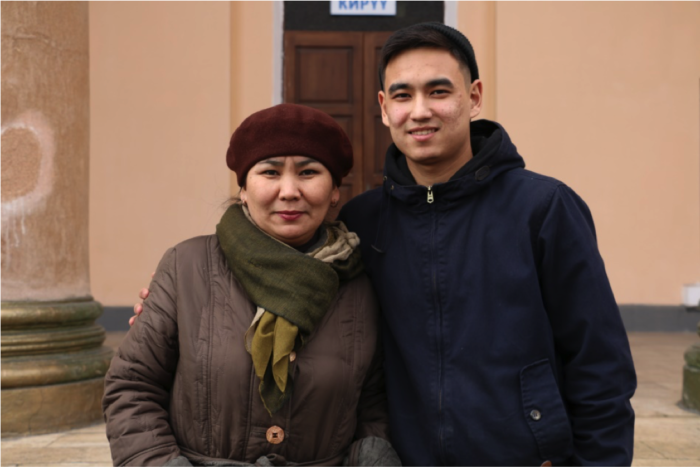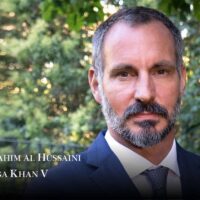Growing up in Jalal-Abad, the Kyrgyz Republic, Baisal spent his childhood with school friends and helping his mother care for his two younger siblings. His favorite memories, however, featured admiring his mother’s paintings that seemingly came to life in their living room.
Baisal was always drawn to the arts, but there were few opportunities for him to make a life as an artist in Jalal-Abad, a region dependent on agriculture. Any jobs were scarce, let alone ones aligned with one’s passion. In the Kyrgyz Republic, one in six people have migrated abroad for better opportunities.
Graduating into a Hard Reality
As a teenager, Baisal recognized this harsh reality. His single mother had a small salary from working at the local theatre, and struggled to provide for her three children. As the eldest child, Baisal enrolled in a technical college for programming with one goal in mind: to help his family become self-sufficient.
Yet even with a programming degree, Baisal was unable to find a position where he could apply his skills after graduation. Baisal says that “somehow, even with my two years studying programming, I did not have the skills that employers were looking for. It was really hard for me to find a job with no previous work experience and with no advanced degree.”
Baisal’s experience is not unique. More than one in five youths in the Kyrgyz Republic are jobless, according to experts’ estimates. Some disillusioned young people leave behind the dreams they once had. Tens of thousands of young people like Baisal have few options for supporting themselves. The Aga Khan Foundation is working to change that picture.

A New Opportunity
Baisal found an alternative when he heard about an artistic apprenticeship program offered in Jalal-Abad through the USAID-funded Demilgeluu Jashtar (Youth Initiative), managed primarily by the Aga Khan Foundation’s Mountain Societies Development Support Programme. This program aims to help Kyrgyzstan’s workforce, particularly youth, fulfill their potential by equipping them with highly sought-after job skills.
In a three-month design course, Baisal gained graphic design skills from experts. Through his hard work, he quickly learned the intricacies of painting and drawing and the fundamentals of graphic design.
The training program was, he says, “really eye-opening for me, because I did not know that there was a field where I could find a good job that used my love of art as well as my technical programming skills.”
Combining Skills with Passion
Now, at 19, Baisal has a leg up thanks to the training, and is working as a graphic designer. His new job is a perfect match for him: it combines his passion for art with his skills as a programmer. Whenever his fellow graphic designers or colleagues have problems with coding or their IT systems, they come to Baisal for help.
Baisal’s mother says that she is “incredibly proud of what my son has accomplished. I talk to him every day and see that he is so happy and fulfilled in this new job. I think it is so amazing that he has been able to find an opportunity that allows him to make a good living and support his little siblings with their schooling—and is something that he loves to do as well!”
Dreams for a Bright Future
Baisal’s success has fueled his bigger dreams for the future. He continues to study programming and graphic design independently, keeping up to date with new developments in the field. He hopes to save money and eventually apply to universities and get his Bachelor’s degree in programming, to further advance his skills and potential.
By 2021, at least 900 more youth are expected to benefit from similar vocational training programs. Tens of thousands of others will benefit from new high school courses on International Computer Driving License (ICDL), a computer literacy certification program, alongside seed capital for youth-led startups, innovation centers for business growth, and newly-created life skills centers.
This post is part of the #humansoftheworld series on our blog—a collection of tales we can both relate to and marvel at. Here, we share stories of appreciation, self-reliance, and strength from across the Aga Khan Development Network.


